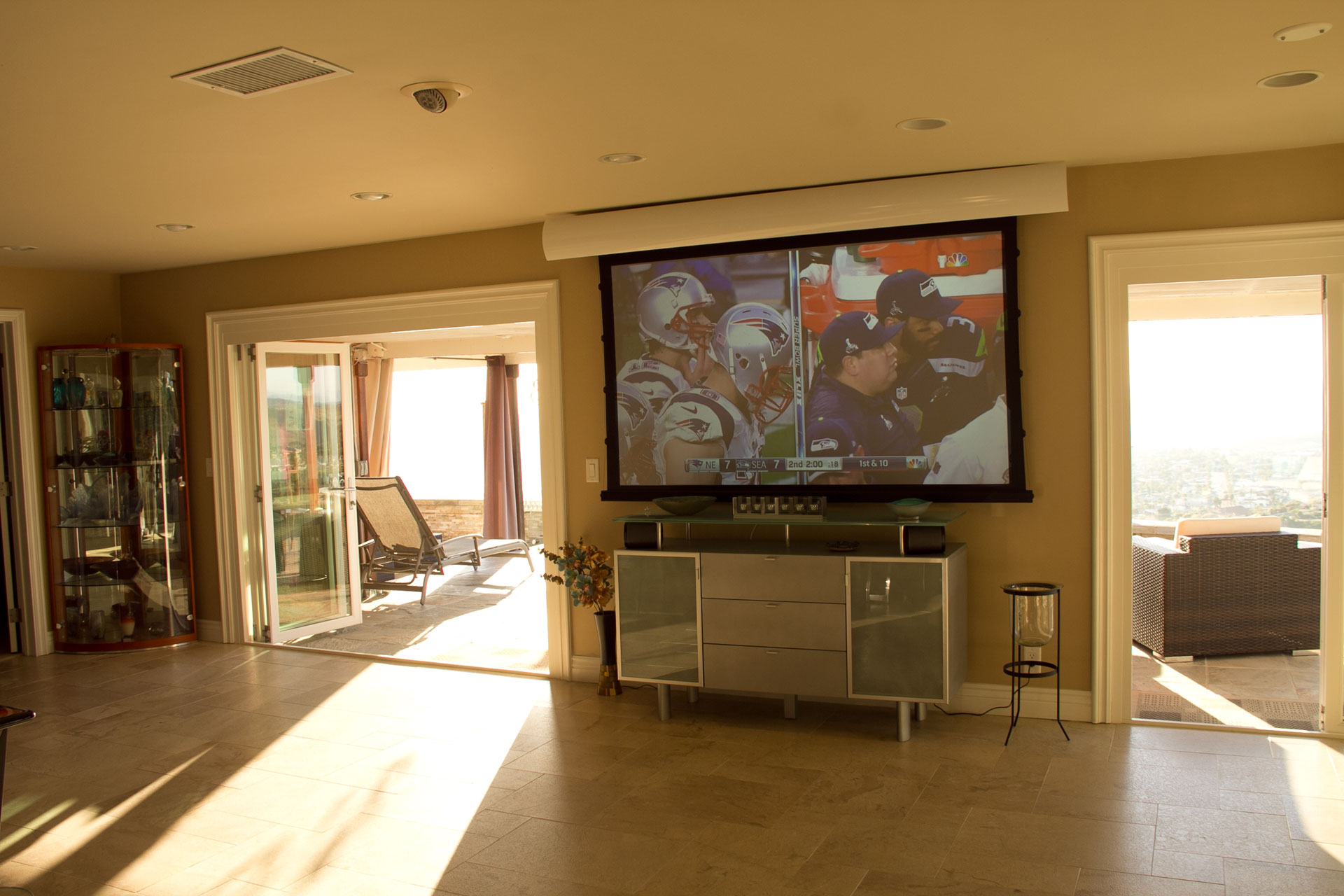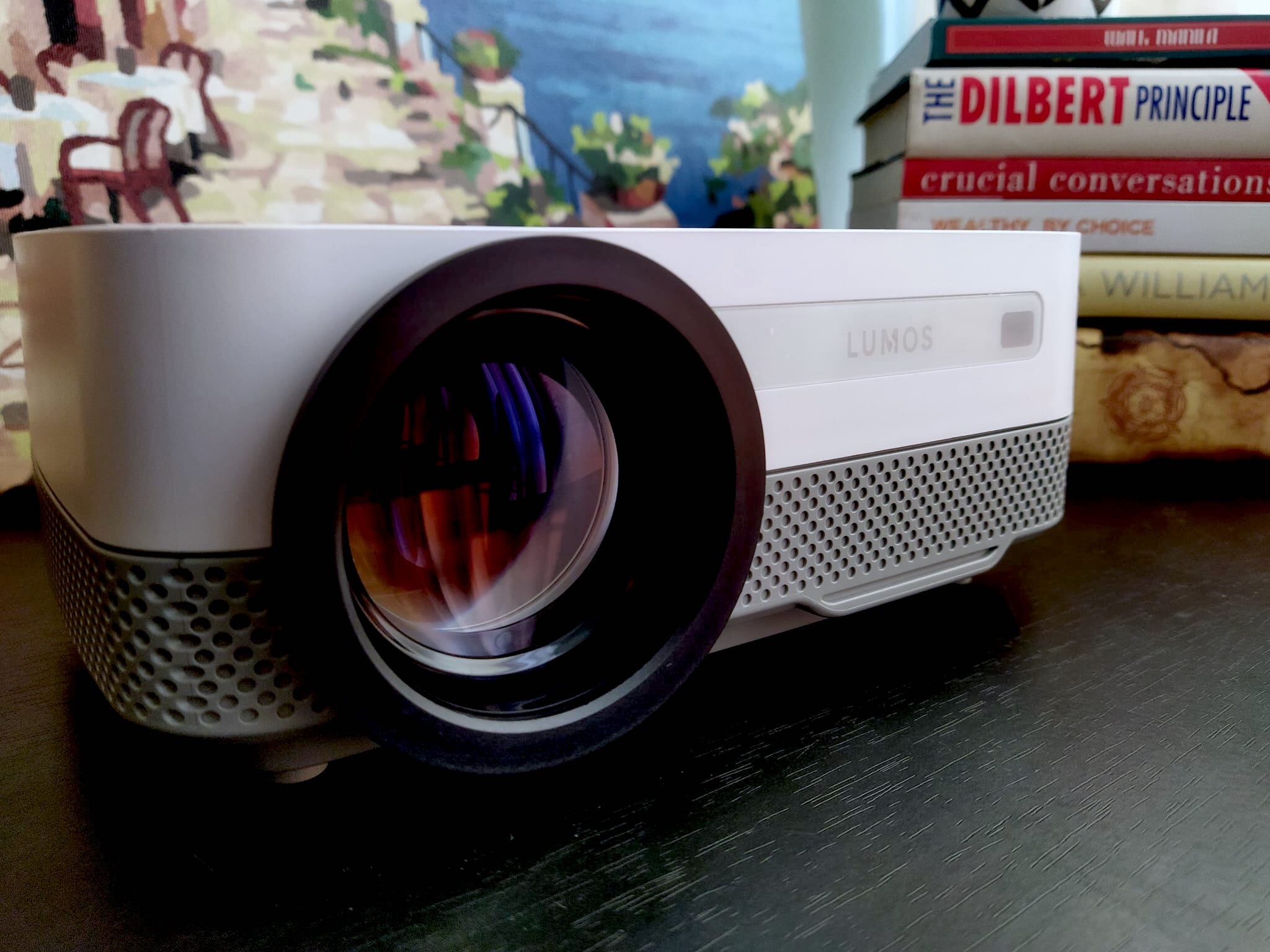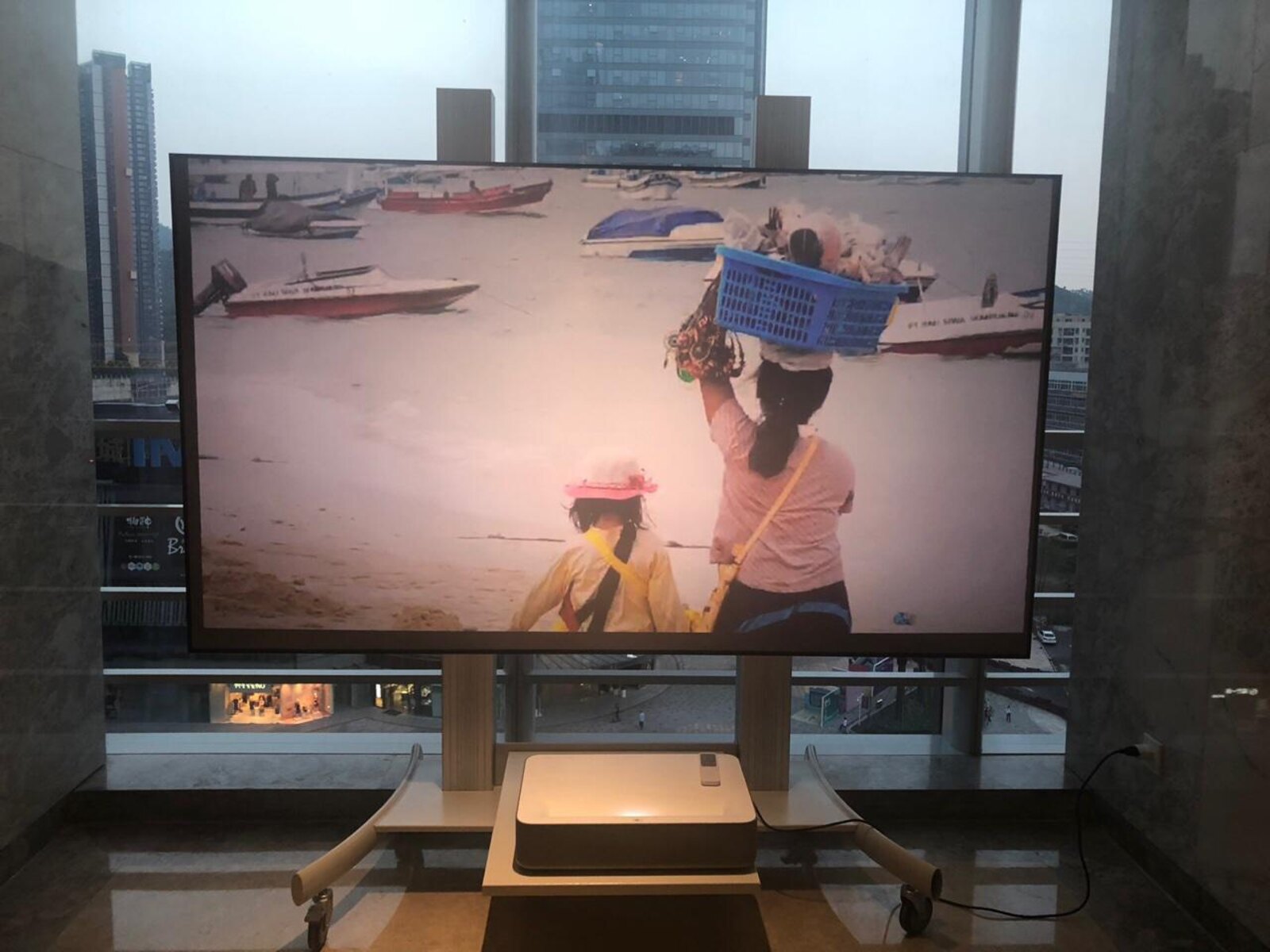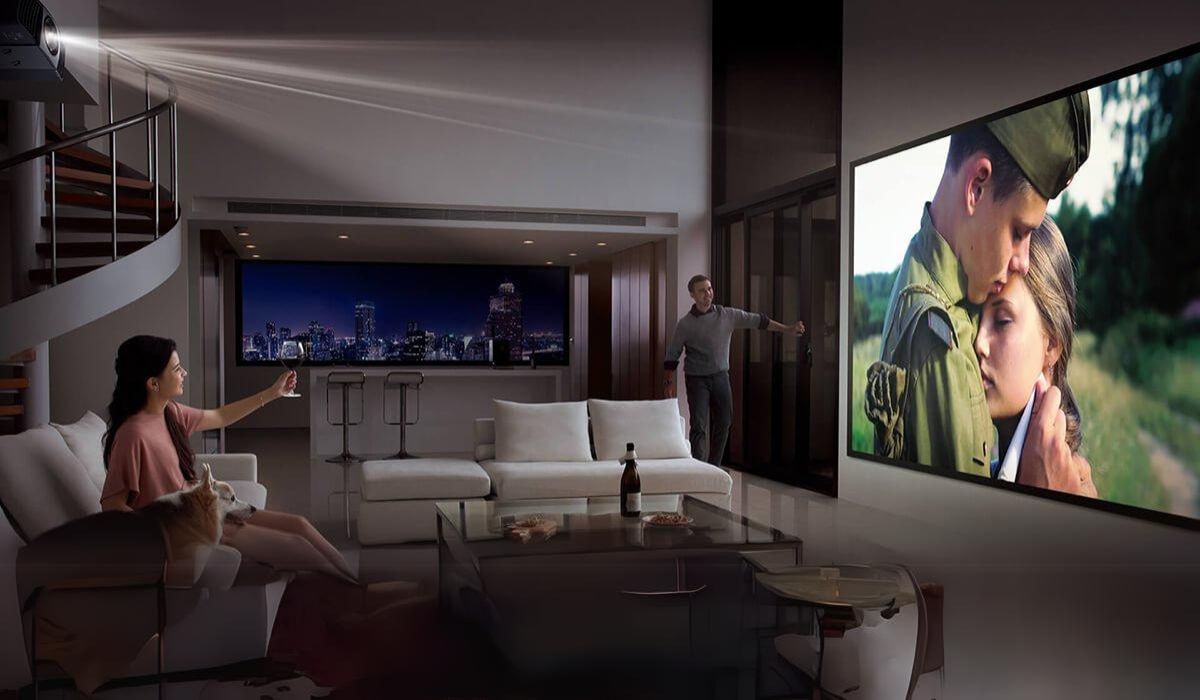Introduction
When it comes to enjoying a captivating movie or giving a presentation, a projector can be a game-changer. However, achieving the optimal viewing experience in a lighted room can be a challenge. One of the key factors to consider in this scenario is the lumens of the projector.
Lumens refer to the brightness or intensity of light produced by a projector. The higher the lumens, the brighter the image will appear. In a dark or dimly lit room, a projector with lower lumens can often suffice. However, in a lighted room, you need a projector with higher lumens to combat the competing ambient light and maintain image clarity and visibility.
Understanding how many lumens you need for a projector in a lighted room is crucial to ensure an optimal viewing experience. In this article, we will explore the importance of lumens in projectors, the factors to consider when choosing lumens for a projector in a lighted room, the ideal lumens for different room lighting conditions, and tips on choosing the right lumen projector for your lighted room.
Ready to find out how many lumens you need for a projector in a lighted room? Let’s dive in!
Importance of Lumens in Projectors
Lumens play a crucial role in determining the visibility and clarity of the projected image, especially in a lighted room. Understanding the importance of lumens will help you make an informed decision when choosing a projector for your specific needs.
First and foremost, lumens determine the brightness of the projected image. In a lighted room, the ambient light can impact the visibility of the image on the screen. With higher lumens, the projector can produce a brighter image, which helps counteract the competing light and maintain visibility.
Furthermore, lumens contribute to the overall picture quality of the projected image. A projector with lower lumens may produce a dimmer image, leading to a loss of detail and contrast. In contrast, a projector with higher lumens can produce a sharper and more vibrant image, enhancing the viewing experience even in a lighted room.
In addition to brightness and image quality, lumens also affect the size of the projected image. With higher lumens, you have the flexibility to project a larger image size without sacrificing visibility. This is particularly useful when presenting in large meeting rooms or auditoriums where you need to reach a wider audience.
It’s important to note that lumens should not be the sole consideration when choosing a projector. Other factors such as resolution, contrast ratio, and throw distance should also be taken into account to ensure an optimal viewing experience.
In summary, the importance of lumens in projectors cannot be understated, especially in a lighted room. Higher lumens ensure a brighter, clearer, and more visible image, even in the presence of ambient light. By understanding the role of lumens and considering other key factors, you can choose a projector that suits your specific needs and delivers an exceptional viewing experience in any lighting condition.
Factors to Consider when Choosing Lumens for a Projector in a Lighted Room
Choosing the right lumens for a projector in a lighted room requires careful consideration of several factors. By taking these factors into account, you can ensure that your projector delivers a bright and clear image, regardless of the ambient lighting conditions. Here are some key factors to consider:
Room Size: The size of the room plays a significant role in determining the lumens you need. Larger rooms require higher lumens to ensure that the projected image reaches all corners of the space.
Lighting Conditions: Assess the lighting conditions in the room where you will be using the projector. Is it a bright room with natural sunlight? Is it an office setting with fluorescent lighting? The more ambient light you have, the higher lumens you will need to combat the competing light.
Screen and Surface Color: The color of the screen or surface where the projector image will be displayed can impact image visibility. A white or lighter-colored surface reflects more light, allowing for better image brightness. Darker surfaces absorb more light, resulting in a dimmer image. Consider the screen color when determining the necessary lumens.
Distance from Source to Screen: The distance between the projector and the projection screen, also known as the throw distance, affects the image brightness. The further the distance, the lower the brightness. Be sure to check the projector’s throw ratio to determine the appropriate lumens for your desired screen size.
Content Type: The type of content you plan to display also influences the required lumens. If you primarily watch movies and videos with high contrast visuals, you may need higher lumens to maintain image quality. For business presentations with mostly text and graphs, you might be able to get by with lower lumens.
Budget: Lumens impact the cost of a projector. The higher the lumens, the more expensive the projector tends to be. Determine your budget and prioritize the factors mentioned above to strike a balance between image quality and cost.
By considering these factors, you can make an informed decision and choose a projector with the appropriate lumens to ensure an optimal viewing experience in a lighted room. It’s important to find the right balance between brightness, image quality, and budget to meet your specific needs.
Ideal Lumens for Different Room Lighting Conditions
When selecting a projector for a lighted room, it is essential to have a clear understanding of the ideal lumens required to achieve optimal image brightness and visibility. The specific lighting conditions in the room will determine the appropriate lumens needed. Here are some guidelines for different room lighting conditions:
Dimly Lit Room: In a dimly lit room, where you have minimal ambient lighting, a projector with around 1,000 to 1,500 lumens should suffice. With lower ambient light, you can achieve a good level of brightness and clear image quality without straining your eyes.
Moderately Lit Room: For a room with moderate ambient lighting, such as a living room with some natural light or a slightly dimmed fluorescent lighting, you will need a projector with approximately 2,000 to 3,000 lumens. This higher lumen count will account for the additional competing light and ensure that the projected image remains bright and visible.
Well-Lit Room: In a well-lit room with plenty of natural sunlight or bright artificial lighting, you will require a projector with at least 3,500 to 5,000 lumens. The higher lumens will offset the strong ambient light, maintaining a bright and clear image. This is particularly important for presentations or watching movies where image details need to be visible.
Overly Bright Room: If you have an excessively bright room with lots of natural sunlight or intense artificial lighting, you will need a high lumen projector in the range of 5,000 to 7,000 lumens or even more. Such a powerful projector will ensure that the image remains visible and vibrant, even in the presence of overwhelming ambient light.
Keep in mind that these are general guidelines and may vary depending on the specific factors mentioned earlier, such as room size, screen color, and throw distance. It is always advisable to consult the projector manufacturer’s specifications and recommendations for your desired room lighting conditions.
By selecting a projector with the ideal lumens for your specific room lighting conditions, you can enjoy a visually stunning and immersive experience, whether you are watching movies, presenting slides, or engaging in any multimedia content.
Choosing the Right Lumen Projector for Your Lighted Room
When it comes to selecting a projector for your lighted room, finding the right balance of lumens is crucial. Here are some tips to help you choose the perfect lumen projector for your specific needs:
Assess the Room Lighting: Evaluate the lighting conditions in your room. Consider the amount of ambient light and the intensity of the lighting sources. This will give you a starting point for determining the appropriate lumens for your projector.
Determine the Room Size: Consider the size of your room. Larger rooms will require higher lumens to ensure image visibility across the entire space. Measure the throw distance needed to cover your desired screen size and factor that into your decision-making process.
Consider the Screen Color: The color of your projection screen or wall can impact the image brightness. A white or light-colored surface reflects more light, allowing for better brightness. If you have a darker screen or wall, you may need to compensate by choosing a projector with higher lumens.
Research Projector Specifications: Look for projectors that are specifically designed for use in lighted rooms. Check the lumens specification provided by the manufacturer and ensure that it meets your requirements. Consider other specifications such as resolution, contrast ratio, and connectivity options to ensure overall image quality.
Read Reviews and Expert Opinions: Seek out reviews and expert opinions on different projectors to gauge their performance in lighted rooms. Look for testimonials from users who have used the projector in similar lighting conditions to get a better idea of its effectiveness.
Consider Budget and Future-Proofing: Set a budget for your projector purchase. While higher lumens tend to come at a higher price point, prioritize your needs and strike a balance between image quality and cost. Additionally, consider future-proofing by opting for a projector with slightly higher lumens than your current needs so that it can accommodate potential changes in your lighting setup.
Consult with Professionals: If you are unsure about the appropriate lumens for your lighted room or have specific requirements, consult with professionals in the audiovisual industry. They can offer personalized recommendations based on your room dimensions, lighting conditions, and desired viewing experience.
By carefully considering these factors and taking the time to research and evaluate different projector options, you can choose the right lumen projector that will deliver stunning image quality and an enjoyable viewing experience in your lighted room.
Conclusion
Choosing the right lumen projector for a lighted room is essential to ensure a bright, clear, and visually engaging viewing experience. By understanding the importance of lumens and considering factors such as room lighting conditions, room size, screen color, and throw distance, you can make an informed decision when selecting a projector.
In a lighted room, higher lumens are necessary to combat the competing ambient light and maintain image visibility and clarity. Consider the specific lighting conditions in your room and select a projector with suitable lumens to meet your needs.
Remember to research and review different projector specifications, read user testimonials, and consult with professionals in the audiovisual industry if needed. Take into account your budget and future-proofing considerations to ensure you choose a projector that provides optimal performance and fits within your financial constraints.
Whether you are watching movies, giving presentations, or enjoying multimedia content, a projector with the right lumens for your lighted room will elevate the viewing experience to new heights.
So, take the time to assess your specific requirements, explore the available options, and make an educated choice. With the perfect lumen projector, you can create a captivating and immersive visual experience in your lighted room.

























